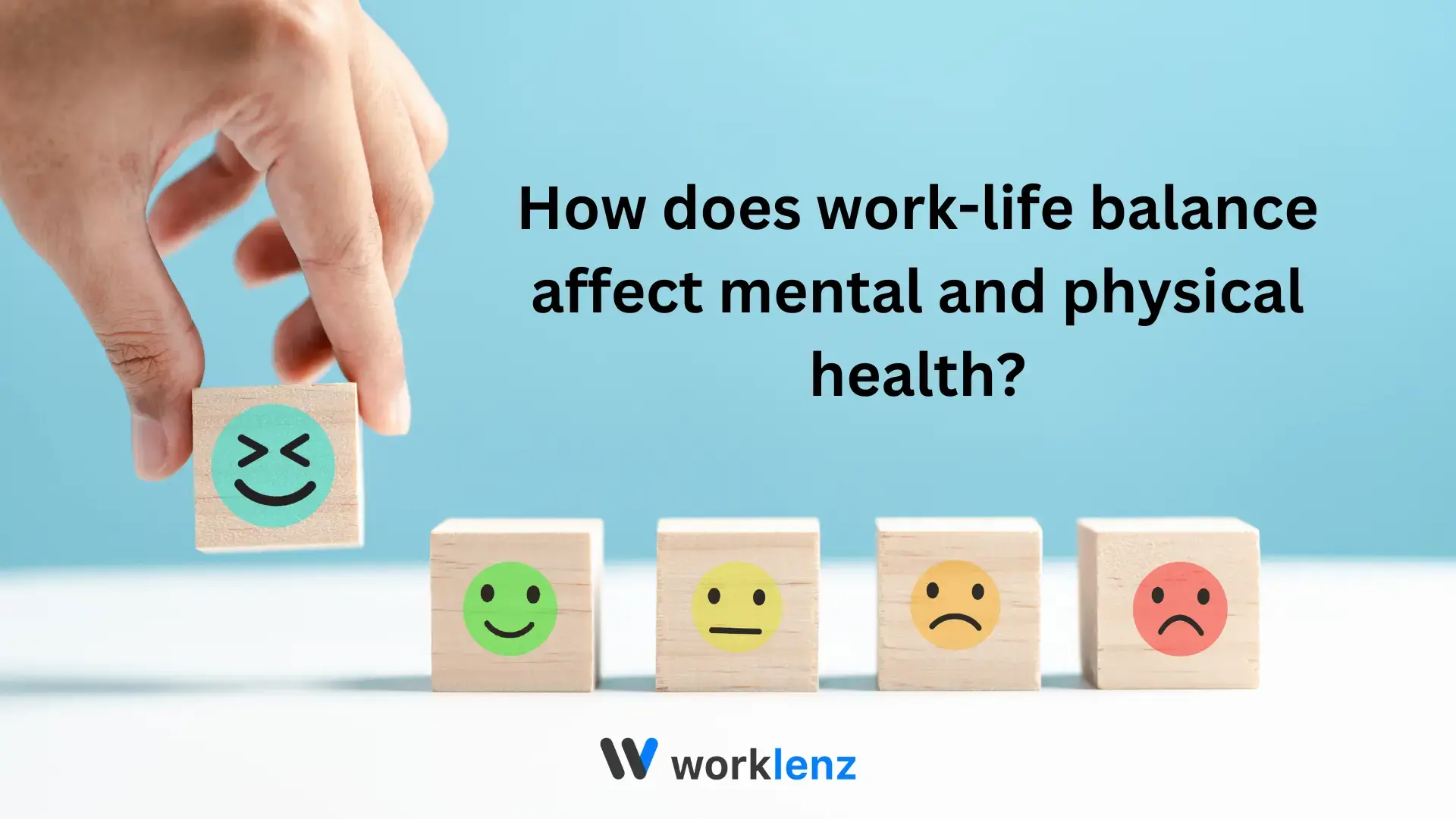
Imagine a company where employees are constantly stressed, overworked, and feeling burnt out. Unfortunately, this scenario is a reality for many organizations today.
A recent study by McKinsey & Company found that organizations with a high degree of employee engagement experience 21% higher profitability.
In a competitive business landscape like this, a healthy work-life balance is not just desirable, but essential for the success of any organization. By prioritizing the well-being of employees, companies can improve productivity, reduce turnover, and create a positive work culture.
It’s easy to become overwhelmed by work demands and neglect personal well-being. A healthy work-life balance, however, is essential for employees to thrive both personally and professionally. When individuals have time to recharge, pursue their interests, and spend quality time with loved ones, they are more likely to feel fulfilled, motivated, and productive.
Personal and Professional Fulfillment
A healthy work-life balance is essential for employees to achieve both personal and professional satisfaction. When individuals have time to recharge, pursue their interests, and spend quality time with loved ones, they are more likely to feel fulfilled and motivated.
Improved Mental and Physical Health
Excessive stress and burnout can have a detrimental impact on mental and physical health. By prioritizing work-life balance, employees can reduce stress levels, improve sleep quality, and enhance their overall well-being.
Increased Productivity and Engagement
When employees feel valued and supported, they are more likely to be engaged and productive in their work. A healthy work-life balance can lead to increased job satisfaction, reduced absenteeism, and higher employee morale.
Enhanced Creativity and Innovation
Taking breaks from work and engaging in activities outside of the office can stimulate creativity and innovation. When employees have time to recharge, they are better equipped to approach challenges with fresh perspectives.
Career Longevity and Success
By maintaining a healthy work-life balance, employees can improve their long-term career prospects. A well-rounded individual who can balance work and personal life is often seen as a valuable asset to any organization.
A study published in the Journal of Occupational Health Psychology found that employees who reported higher levels of work-life balance were less likely to experience burnout, depression, and anxiety.

While many employees may believe that putting in long hours is necessary for career success, the hidden costs of overwork can be significant. Chronic stress and burnout can have a detrimental impact on both mental and physical health. In this section, we’ll explore how work-life balance is crucial for employee well-being.
The Mental Toll
Chronic stress and burnout can have a detrimental impact on mental health. When employees are constantly overwhelmed and overworked, they are more likely to experience:
Anxiety: Constant worry and fear can interfere with daily life and relationships.
Depression: Feelings of sadness, hopelessness, and worthlessness can take a toll on overall well-being.
Burnout: Exhaustion, cynicism, and reduced productivity can result from prolonged stress.
The Physical Consequences
In addition to mental health problems, stress can also contribute to a range of physical ailments:
Heart disease: Chronic stress can increase blood pressure and cholesterol levels, raising the risk of heart attack and stroke.
Digestive issues: Stress can disrupt the digestive system, leading to symptoms like ulcers, constipation, and diarrhea.
Weakened immune system: A stressed body is more susceptible to illness and infections.
By prioritizing work-life balance, employees can:
Reduce stress: Effective time management, setting boundaries, and practicing relaxation techniques can help alleviate stress.
Improve sleep quality: A balanced lifestyle promotes better sleep, which is essential for both mental and physical health.
Boost mood: Engaging in activities you enjoy and spending time with loved ones can improve overall mood and well-being.
Enhance overall health: A healthy work-life balance can contribute to a stronger immune system, lower blood pressure, and reduced risk of chronic diseases.
Identifying the signs of poor work-life balance is crucial for taking steps to improve your employee’s well-being. By being aware of these warning signals, you can assess their situation and make necessary adjustments to create a healthier balance between work and personal life.
Constant stress and anxiety: Feeling overwhelmed, irritable, or anxious most of the time.
Decreased productivity: Finding it challenging to concentrate, focus, or complete tasks efficiently.
Physical symptoms: Experiencing headaches, digestive issues, or other physical ailments.
Burnout: Feeling emotionally exhausted, cynical, and disengaged from your work.
Overworking: Consistently working longer hours than intended or feeling pressured to work excessively.
Lack of personal time: Having little or no time for hobbies, interests, or relaxation.
Difficulty setting boundaries: Struggling to separate work and personal life.
If your team seems to experience several of these symptoms, it may be time to reevaluate your work-life balance and take steps to make necessary adjustments.
Sarah was constantly stressed and overworked, leading to frequent burnout. She neglected her personal relationships, struggled to sleep, and experienced physical symptoms like headaches and digestive issues. Eventually, Sarah realized that she needed to prioritize her well-being and set better boundaries between work and personal life.
David was so focused on meeting his sales targets that he often worked late nights and weekends. This constant pressure led to increased stress, anxiety, and a decline in his overall health. David eventually realized that he needed to prioritize his well-being and find a better balance between work and personal life.
Employee engagement is a crucial factor in organizational success. When employees feel valued, supported, and motivated, they are more likely to be productive, committed, and satisfied with their jobs. A healthy work-life balance can play a significant role in improving employee engagement.
Studies have shown a strong correlation between work-life balance and employee engagement. When employees have time to recharge, pursue their interests, and spend quality time with loved ones, they are more likely to feel,
Valued - Employees who feel appreciated and respected are more likely to be engaged in their work.
Supported - When organizations provide resources and flexibility to support employees’ personal lives, they feel valued and supported.
Motivated - Employees who have a healthy work-life balance are more likely to be motivated and enthusiastic about their work.
Improving employee engagement can lead to a number of benefits for organizations, including,
Increased productivity: Engaged employees are more likely to be productive and efficient in their work.
Reduced turnover: Employees who feel valued and supported are less likely to leave their jobs.
Improved customer satisfaction: Engaged employees are more likely to provide excellent customer service.
Enhanced innovation: Engaged employees are more likely to be creative and innovative.
To improve employee engagement, organizations can implement a variety of strategies, such as,
Offering flexible work options, such as remote work or flexible hours, can help employees balance their work and personal lives.
Recognizing and rewarding employees for their contributions can boost morale and engagement.
Providing opportunities for employees to learn and grow can help them feel valued and motivated.
By prioritizing work-life balance and implementing strategies to improve employee engagement, organizations can create a positive and productive work environment.
A healthy work-life balance is not only beneficial for employees but also for employers. By prioritizing the well-being of their workforce, organizations can reap a variety of benefits.
Increased Productivity
Employees who are well-rested, less stressed, and more engaged are more likely to be productive. When individuals have time to recharge and pursue their interests outside of work, they return to their jobs with renewed energy and focus.
Reduced Absenteeism and Turnover
A healthy work-life balance can lead to reduced absenteeism and turnover. When employees feel valued, supported, and less stressed, they are less likely to take sick days or leave their jobs.
Improved Employee Morale
A positive work-life balance can boost employee morale and create a more enjoyable work environment. When employees feel that their needs and well-being are prioritized, they are more likely to be satisfied with their jobs and committed to the organization.
Enhanced Company Reputation
Organizations that prioritize work-life balance can improve their reputation as employers. This can attract top talent and enhance the company’s brand image.
Increased Innovation and Creativity
When employees have time to recharge and pursue their interests outside of work, they are more likely to be creative and innovative. A healthy work-life balance can foster a culture of innovation and problem-solving.
Improved Customer Satisfaction
Employees who are happy and engaged are more likely to provide excellent customer service. A positive work environment can lead to improved customer satisfaction and loyalty.
Financial Benefits
In addition to the intangible benefits of work-life balance, organizations can also experience tangible financial benefits. Reduced turnover, increased productivity, and improved customer satisfaction can all contribute to the bottom line.
By prioritizing work-life balance, organizations can create a more positive, productive, and sustainable work environment.